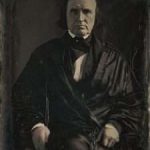
The future king of England, Prince William, will celebrate his 40th birthday over the English summer in an extravagant bash at Windsor Castle surrounded by hundreds of family and friends.
Only two people who matter will miss the party – his mother, Diana, Princess of Wales, who was killed in a car accident in 1997 when William was just 15 years old, and his estranged and only sibling Prince Harry, now living in California.
We’ve watched him grow from a tow-headed schoolboy, to bravely walking behind his mother’s coffin, to a dashing air-sea rescue pilot and a balding father of three.
His life story so far has been told through iconic images and moments.
As he turns 40 on June 21 (UK time), it will be the next decades when he will make the biggest changes, as he assumes an increasingly central role in the royal family to prepare for his eventual accession to the throne.

Two weeks ago, William took centre stage at the extravaganza concert marking Queen Elizabeth II’s 70 years on the throne, lauding his grandmother as an environmental trailblazer as he delivered a call to action on climate change.
“Tonight has been full of such optimism and joy – and there is hope,” he said, as images of wildlife, oceans and jungles were projected on the walls of Buckingham Palace behind him.
“Together, if we harness the very best of humankind, and restore our planet, we will protect it for our children, for our grandchildren and for future generations to come.”
His charities and causes – from mental health to the environment – have given hints of what sort of monarch he might be.
It’s really just the start of a long, distinguished list of passion projects.
Recently, he went undercover to sell copies of The Big Issue, a publication put out by marginalised people who are working to overcome homelessness.
He then visited The Passage, a charity that provides services to prevent and end homelessness.
Both causes were dear to Diana, so get ready to see more of this as William puts his stamp on the new generation of the monarchy.
‘He will treat things differently’
Slowed by age and health problems, the 96-year-old Queen is gradually handing over more responsibilities to her son and heir, Prince Charles.
Royal expert Professor Pauline Maclaran, author of Royal Fever: The British Monarchy in Consumer Culture, says Prince William has been “very keen to show how he will treat things differently”.
“And so we see that more and more, where the future of the line is being emphasised, with Charles being put more in a kind of holding position for William,” Profesor Maclaran said.
“We’re always reminded that William is after Charles.”
William’s position as the eventual heir to the throne was, of course, sealed at his birth on June 21, 1982, as the first son of Charles and the late Princess Diana.
The world has watched him from the second Charles and Diana presented him to TV cameras outside St Mary’s Hospital in London, through his school days, his courtship of Kate Middleton at the University of St Andrews in Scotland, and their spectacular marriage at Westminster Abbey.
He graduated from the Royal Military Academy Sandhurst, then went on to active duty in the Army, Navy and Royal Air Force then a civilian air ambulance pilot, before moving into full-time royal duties five years ago.
We saw the high and lows, from the heartbreaking tragedy of farewelling his mother through the streets of London, to the happiness of bringing three beautiful children into the world.
Then there was the rift with his brother Harry after his marriage to US soap actor Meghan Markle, and their now-infamous bombshell interview with Oprah Winfrey (and more recently with co-anchor of the NBC News morning show Today Hoda Kotb).
Cue music.
Let’s take a look at his life … so far.































The events just before and during the celebrations of the Queen’s Platinum Jubilee started to give a clearer indication of William’s vision of the future.
William and Kate represented the Queen in March when they made an eight-day tour of Belize, Jamaica and the Bahamas, three of the 14 independent countries where the British monarch still serves as head of state.
They were met with brass bands and gala dinners, but also demonstrations by protesters demanding reparations for Britain’s role in the enslavement of millions of Africans.
Jamaican Prime Minister Andrew Holness told the royals his country intended to become a republic, severing ties to the monarchy.
After the trip, the young royals were criticised as “tone deaf” for perpetuating images of Britain’s colonial rule.
But rather than falling back on the House of Windsor’s traditional response of “never complain, never explain”, William took the unusual step of issuing a statement reflecting on all that had happened.
“I know that this tour has brought into even sharper focus questions about the past and the future,” William said. “In Belize, Jamaica and the Bahamas, that future is for the people to decide upon.
“Catherine and I are committed to service,” he continued. “For us, that’s not telling people what to do. It is about serving and supporting them in whatever way they think best.”


Professor Maclaran says the willingness to be approachable is critical for the House of Windsor as it seeks to remain relevant to younger people and cement its role in British society.
“It’s important that William shows there are going to be changes to the monarchy,” she said.
“Otherwise, you know, I suspect it really can’t survive.”
The post ‘He will treat things differently’: The future king of England and his first 40 years in the spotlight appeared first on The New Daily.
Powered by WPeMatico






